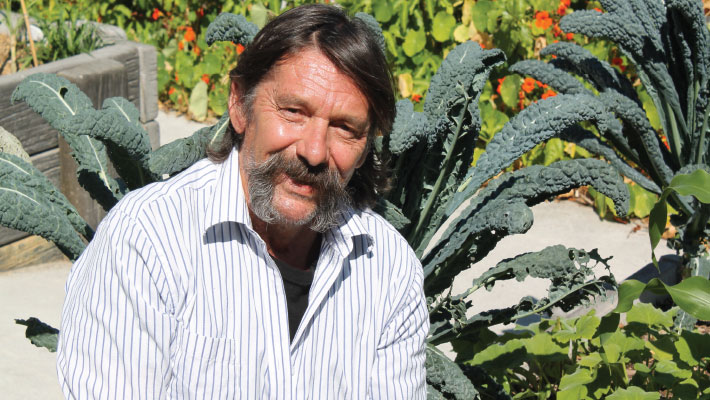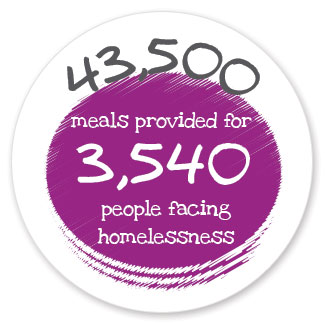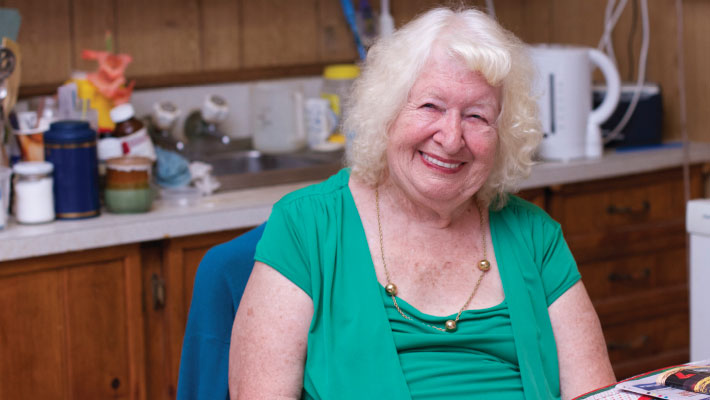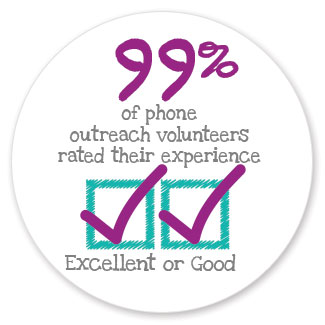Building bridges into the community
We work towards overcoming the social exclusion faced by people living on the margins of society, with the aim of supporting increased life choices and independence.
This year we continued working to meet the practical and social needs of people experiencing homelessness, mental illness, contact with the justice system, and other forms of social isolation and disadvantage.
Advocating for change
Red Cross is engaging in a national campaign to lobby for the introduction of a justice reinvestment approach to the Australian justice system. Justice reinvestment calls for funds to be redirected from prisons to programs which address the root causes of crime. We are undertaking evidence-based advocacy with state and territory governments, and carrying out community and stakeholder consultations in Ceduna, South Australia to identify contributing factors that result in high rates of crime.

Chris Moran participated in the launch of a collection of writings by the Red Cross Jeays Street Community Centre’s creative writing group. Recovering from mental illness, Chris says he has the centre in inner-city Brisbane to thank for supporting him to get his life back on track. “Being in the Red Cross centre here has brought tremendous benefits. I mix with other people, I’m exercising my creativity and I’ve got a life plan that’s coming along really well.” Photo: Australian Red Cross/Susan Cullinan
Expanding our services

This year we launched new programs to assist older people at risk of becoming homeless or already experiencing homelessness across five regional areas in Western Australia, South Australia, Victoria and Queensland. Of the people who we supported in accessing affordable, sustainable and appropriate housing and care, we prioritised working with people who have additional vulnerabilities in order to support them against more complex risks. 43% of these people were aged 65 years or older, 54% were women and 46% were from an Aboriginal and Torres Strait Islander background.
Our community visiting service matches older people with Red Cross volunteers for regular social visits. A Federal Government grant of an additional $2.8 million to this program is enabling 810 more people across Australia to receive Red Cross volunteer visitors. These visits support older people to reduce social isolation and loneliness, and increase their overall wellbeing.

Living independently in her home is important to Isobel, who knows that if she had a sudden accident or illness, Red Cross would arrange for someone to check on her. This system was put to the test when she fell through a glass door at home and lay injured, alone and unable to call for help. Red Cross staff and volunteers raised the alarm after Isobel failed to answer her morning phone call and she quickly received treatment. Photo: Australian Red Cross/Chris Mayhew
Other social support programs across Australia were also expanded this year. These included services to help older people, those affected by mental illness, socially isolated Aboriginal people and others to connect to their communities. In delivering these programs, we draw from a wide range of research showing the positive impact that community and cultural connections can have upon individual health and wellbeing.

Monitoring effectiveness
We commissioned PricewaterhouseCoopers to conduct an external evaluation of two of our telephone outreach services, including one tailored for Aboriginal and Torres Strait Islander peoples. The results showed that both participants and volunteers consider the programs to be effective, with clients reporting improved social connections and increased levels of confidence. Almost 96% of clients reported that our phone services provide them with reassurance and peace of mind.
“Assistance to soldiers discharged from hospital, but still under medical treatment for war injuries, forms an important part of Red Cross work. The prevailing unemployment, combined with much sickness and consequent distress, has been responsible during the past year for heavy work in all Divisions.”
1933-1934 Annual Report.


Let us know what you think
Any feedback or complaints about Red Cross or its work can be made at redcross.org.au or by calling 1800 811 700. Red Cross invites any feedback you may have regarding the Year in Review 2013/2014. Contact the editorial team at publications@redcross.org.au